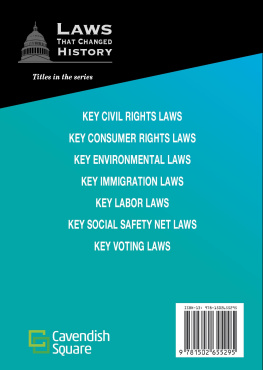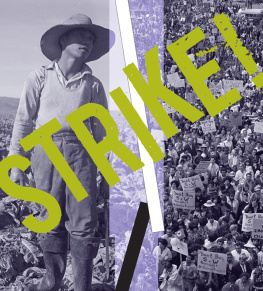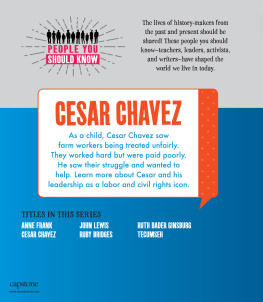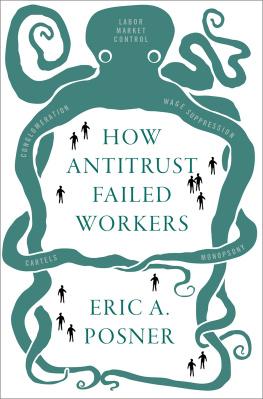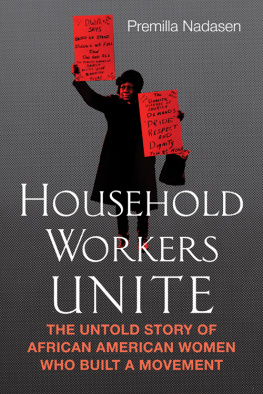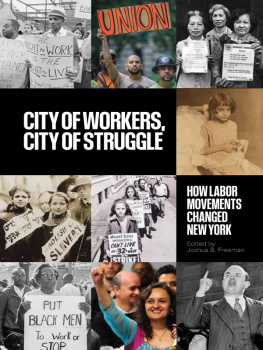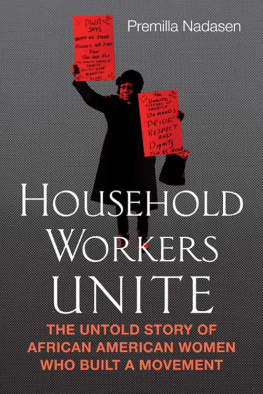
Published in 2020 by Cavendish Square Publishing, LLC
243 5th Avenue, Suite 136, New York, NY 10016
Copyright 2020 by Cavendish Square Publishing, LLC
First Edition
No part of this publication may be reproduced, stored in a retrieval system, or transmitted in any form or by any meanselectronic, mechanical, photocopying, recording, or otherwisewithout the prior permission of the copyright owner. Request for permission should be addressed to Permissions, Cavendish Square Publishing, 243 5th Avenue, Suite 136, New York, NY 10016. Tel (877) 980-4450; fax (877) 980-4454.
Website: cavendishsq.com
This publication represents the opinions and views of the author based on his or her personal experience, knowledge, and research. The information in this book serves as a general guide only. The author and publisher have used their best efforts in preparing this book and disclaim liability rising directly or indirectly from the use and application of this book.
All websites were available and accurate when this book was sent to press.
Cataloging-in-Publication Data
Names: Acks, Alex.
Title: Key labor laws / Alex Acks.
Description: New York: Cavendish Square Publishing, 2020. | Series: Laws that changed history | Includes glossary and index.
Identifiers: ISBN 9781502655295 (pbk.) | ISBN 9781502655301 (library bound) | ISBN 9781502655318 (ebook)
Subjects: LCSH: Labor laws and legislation--United States--History--Juvenile literature. | Labor--United States--History--Juvenile literature.
Classification: LCC KF3319.A72 2020 | DDC 344.7301--dc23 Printed in the United States of America
Photo Credits: Cover, p..
CONTENTS
Introduction
I t started with an anonymous note in a work mailbox in 1998. Lilly Ledbetter, a manager at Goodyear Tire and Rubber, picked up the innocuous piece of paper and was devastated by what she read.
At Goodyear, performance evaluations determined raises for managers. Ledbetter had received several poor evaluations early on, which she felt were the result of gender discrimination rather than a true reflection of her performance. The early bad evaluations kept her pay low compared to her male coworkers, since raises were always a percentage of current salary.
In July of 1998, Ledbetter filed formal charges with the Equal Employment Opportunity Commission (EEOC). Founded in 1965, the EEOC enforces civil rights laws against discrimination related to race, national origin, religion, sex, age, disability, and other categories.

The first law President Barack Obama signed was the Lilly Ledbetter Fair Pay Act of 2009.
Ruth Bader Ginsburg, the only female justice on the Supreme Court at the time, read her dissent from the bench, a rare move that showed how strenuously she disagreed with the majority.
Lilly Ledbetter walked away with nothing, but she kept fighting against pay discrimination. On January 29, 2009, the Lilly Ledbetter Fair Pay Act of 2009 became the first law that President Barack Obama signed. The act reset the 180-day clock at each paycheck that showed discriminatory effect.
The Pew Research Center showed that in 2015, black and Hispanic men as well as women of all races earned significantly less than white men. Lilly Ledbetters law is only one recent battle waged on a front that stretches back to the Industrial Revolution in America.
CHAPTER
1
Labor vs. Monopolies
A s long as there have been working people, theyve been at odds with those who pay them. With the massive shift from subsistence farming to factory work that the Industrial Revolution caused starting around 1790, this divide became even more noticeable.
In America, the new working class was largely made up of immigrants and people from rural areas who had moved to the cities. Wealth flowed into the hands of the people who owned the factories, while wages for the workers remained low. Workers were disposable because there was always someone else next in line who was desperate for any job.

Martin Luther King Jr. ( center ) marched for civil rights, which included the right to a good job at a fair wage
Workers began to organize to fight for better conditions; while one person walking off the job could be ignored, every worker in a factory leaving would stop production in its tracks. In 1834, the owners of the textile mills in Lowell, Massachusetts, decided that they were paying the girls who tended the machines too much and cut their wages. The girls, furious, turned out, meaning they walked out of work, and they went to other nearby factories to recruit more women for their protest. Their action was what wed call a strike today.
This first strike was unsuccessful; the mill girls were forced to return to work, and the bosses took petty revenge on their families, such as taking away their rooms at boarding In practice, this meant employees often had to work late anyway or risk being fired in favor of another employee who would.
The LFLRA was the first labor union for women in the United States and marked the beginning of an era of organized action by working-class people. The Brotherhood of Locomotive Engineers and Trainmen was founded in 1863, a little less than thirty years after the Lowell mill girls first turned out. Soon, larger unions began to span the United States.

The Lowell Female Labor Reform Association was established by women working at textile mills. It was the first union for working women.
After the Thirteenth Amendment
In the Emancipation Proclamation, Abraham Lincoln declared on January 1, 1863, that all enslaved people in the Confederate states (but not those in the Union states) were free. The Thirteenth Amendment followed a little less than three years later, making slavery illegal except as punishment for a crime.
The time after the American Civil War was one of social upheaval. The first movement for female suffrage was launched, partly powered by working women. Workers in the North fought to better their conditions with strikes and other direct action, some of which was violent. Across America, unions proliferated, aided in the South by Reconstruction governments that recognized labors right to organize.
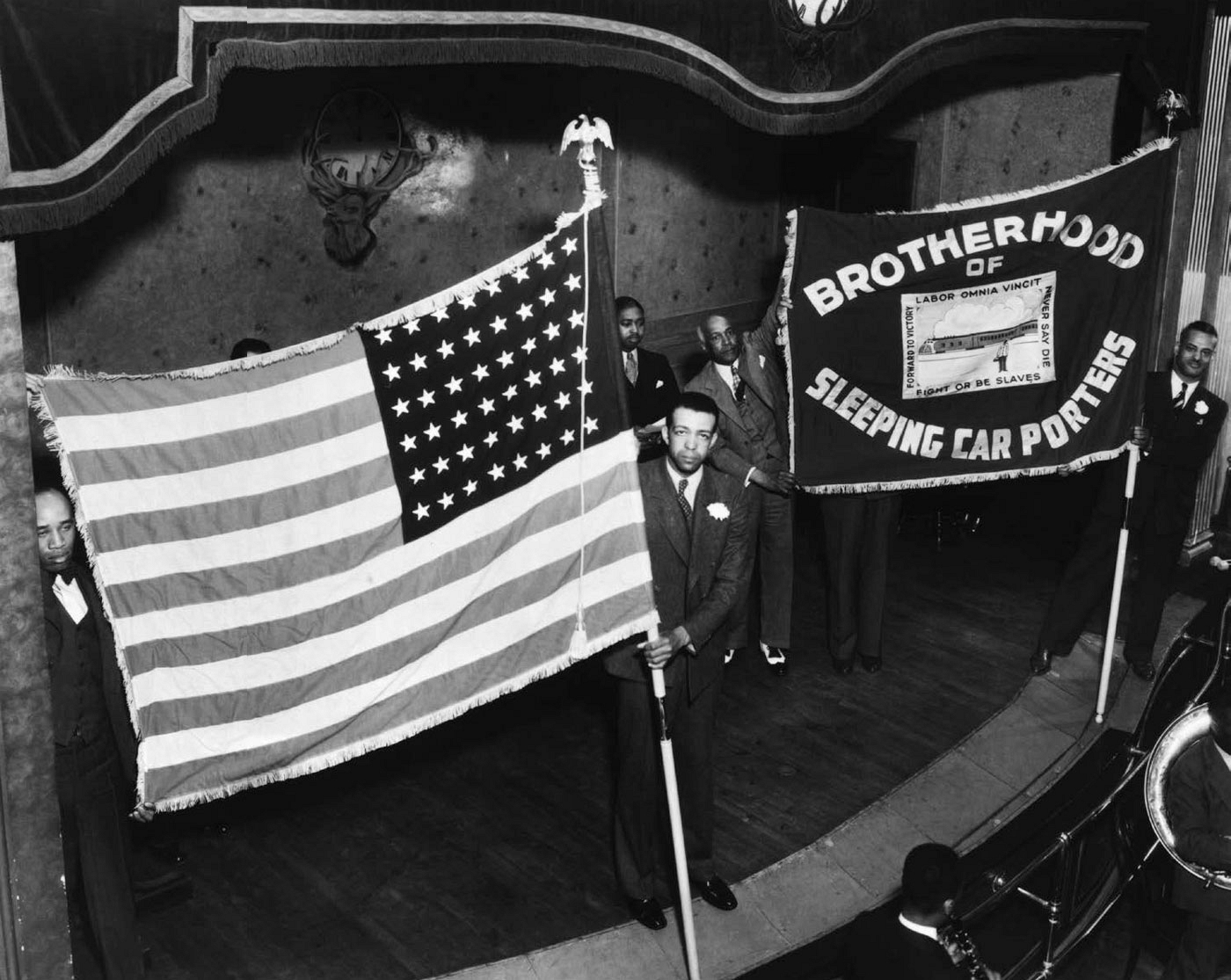
The Brotherhood of Sleeping Car Porters was the first union led by black men to be admitted into the American Federation of Labor.
Organizations such as the National Labor Union tried to unite unions of diverse race and gender to fight for the same cause. However, the NLU excluded Chinese immigrant workers at its founding. This frustrating division along racial lines often had labor fighting against itself rather than the actual source of workers misery.
Driven by advances in railroad technology, industry and agriculture experienced massive booms. Companies grew large and built themselves into monopolies, headed by ruthless robber barons who had no problem with using political favors and hired muscle to crush labor revolts and business competition alike. The massive wealth these tycoons amassed, in contrast to the poverty their workers lived in gave this period, from about 1870 to 1900, its name: the Gilded Age, because gilded means covered in gold.
Next page
